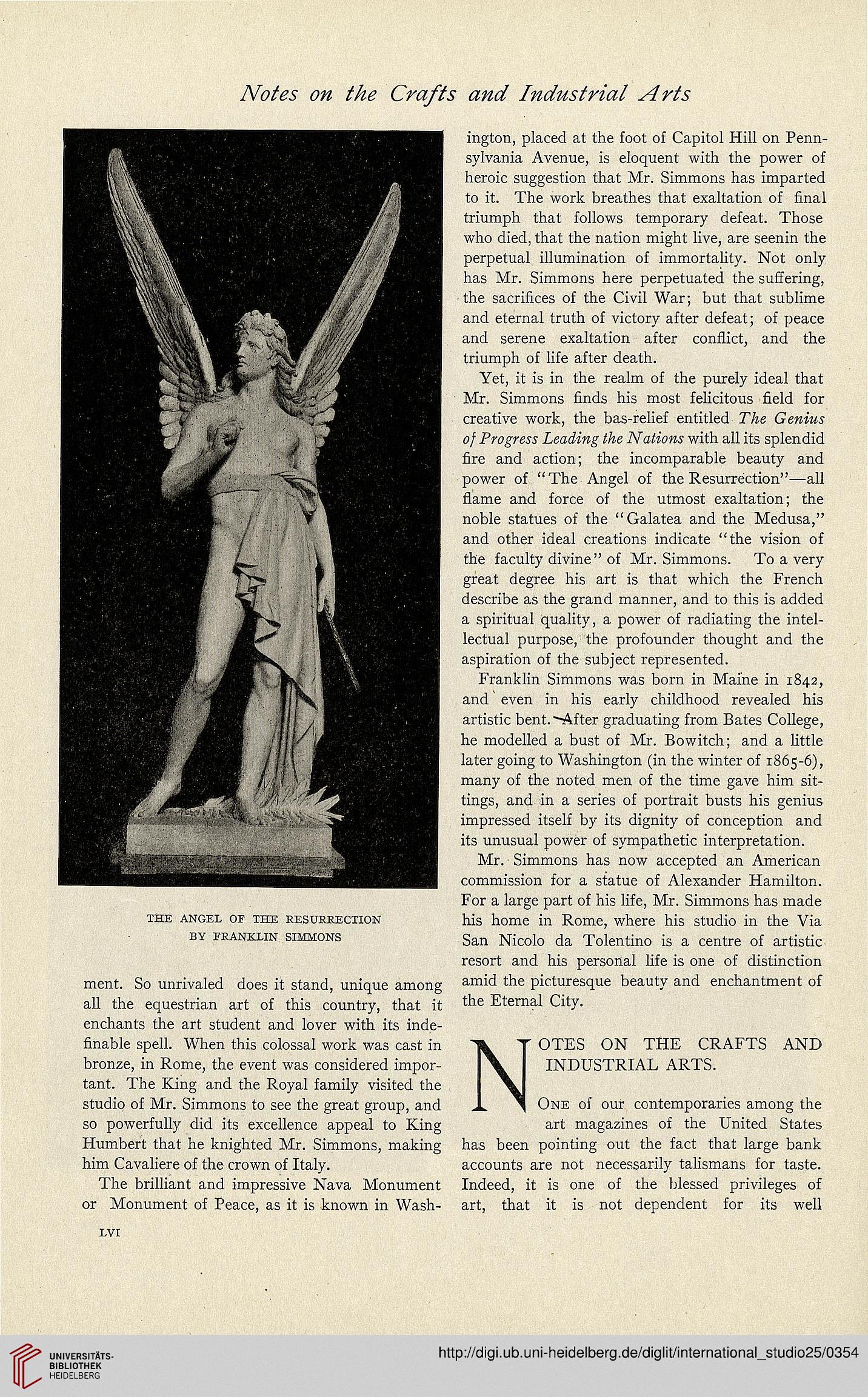THE ANGEL OF THE RESURRECTION
BY FRANKLIN SIMMONS
ment. So unrivaled does it stand, unique among
all the equestrian art of this country, that it
enchants the art student and lover with its inde-
hnable spell. When this colossal work was cast in
bronze, in Rome, the event was considered impor-
tant. The King and the Royal family visited the
studio of Mr. Simmons to see the great group, and
so powerfully did its excellence appeal to King
Humbert that he knighted Mr. Simmons, making
him Cavaliere of the crown of Italy.
The brilliant and impressive Nava Monument
or Monument of Peace, as it is known in Wash-
LVI
ington, placed at the foot of Capitol Hill on Penn-
sylvania Avenue, is eloquent with the power of
heroic suggestion that Mr. Simmons has imparted
to it. The work breathes that exaltation of 6nal
triumph that follows temporary defeat. Those
who died, that the nation might live, are seenin the
perpetual illumination of immortality. Not only
has Mr. Simmons here perpetuated the suffering,
the sacrifices of the Civil War; but that sublime
and eternal truth of victory after defeat; of peace
and serene exaltation after conflict, and the
triumph of life after death.
Yet, it is in the realm of the purely ideal that
Mr. Simmons finds his most felicitous field for
creative work, the bas-relief entitled TAe GewfMj
o/ RwgrMj Z.eaJfMg ^Ae with all its splendid
fire and action; the incomparable beauty and
power of "The Angel of the Resurrection"—all
flame and force of the utmost exaltation; the
noble statues of the "Galatea and the Medusa,"
and other ideal creations indicate "the vision of
the faculty divine" of Mr. Simmons. To a very
great degree his art is that which the French
describe as the grand manner, and to this is added
a spiritual quality, a power of radiating the intel-
lectual purpose, the profounder thought and the
aspiration of the subject represented.
Franklin Simmons was born in Maine in 1842,
and even in his early childhood revealed his
artistic bent. "-After graduating from Bates College,
he modelled a bust of Mr. Bo witch; and a little
later going to Washington (in the winter of 1865-6),
many of the noted men of the time gave him sit-
tings, and in a series of portrait busts his genius
impressed itself by its dignity of conception and
its unusual power of sympathetic interpretation.
Mr. Simmons has now accepted an American
commission for a statue of Alexander Hamilton.
For a large part of his life, Mr. Simmons has made
his home in Rome, where his studio in the Via
San Nicolo da Tolentino is a centre of artistic
resort and his personal life is one of distinction
amid the picturesque beauty and enchantment of
the Eternal City.
OTES ON THE CRAFTS
INDUSTRIAL ARTS.
AND
N
JL 1 ONE of our contemporaries among the
art magazines of the United States
has been pointing out the fact that large bank
accounts are not necessarily talismans for taste.
Indeed, it is one of the blessed privileges of
art, that it is not dependent for its well




